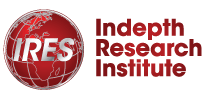For years, occupational health and safety (OHS) was seen primarily as a matter of meeting legal requirements and avoiding penalties. However, in today’s industrial landscape, ISO 45001, the international standard for occupational health and safety management systems, has evolved. It has become a strategic differentiator for manufacturers that aspire to achieve sustainable growth.
In an era where operational excellence and employee well-being define market leadership, ISO 45001 offers manufacturers a structured framework to integrate safety with performance. Forward-thinking companies utilize this standard to minimize incidents and enhance productivity.
Contents
- 1 The Essence of ISO 45001: From Reactive to Proactive Safety
- 2 Read also: Why Workplace Safety Training is Important to Manufacturing
- 3 Strengthening Global Competitiveness Through Certification
- 4 Legal and Regulatory Synergy: The Compliance Advantage
- 5 Enhancing Operational Efficiency and Cost Control
- 6 Building Trust and Reputation in the Age of ESG
- 7 Integration of ISO 45001 with OSHA 2007: The Kenyan Advantage
- 8 Driving Continuous Improvement Through Leadership and Worker Participation
- 9 Conclusion: Safety as a Strategic Asset
- 10 Call to Action
- 11 FAQs
The Essence of ISO 45001: From Reactive to Proactive Safety
Unlike older standards, this one emphasizes proactive risk prevention rather than reactive problem-solving. It requires organizations to anticipate potential hazards and engage all levels of the organization in continuous safety improvement.
This proactive philosophy aligns with today’s lean manufacturing and Six Sigma cultures, where efficiency and risk management are closely intertwined. Manufacturers that adopt this often discover that safety improvements naturally lead to fewer disruptions and greater process consistency.
For instance, global manufacturers Siemens and Toyota have embedded ISO 45001 frameworks into their operations. As a result, they report measurable reductions in lost-time incidents and significant increases in operational reliability. The standard allows them to maintain uniform safety performance across facilities in multiple countries, reinforcing their brand reputation for quality and responsibility.


Read also: Why Workplace Safety Training is Important to Manufacturing
Strengthening Global Competitiveness Through Certification
Today’s industrial and export markets are increasingly prioritizing partners who can demonstrate compliance with internationally recognized standards. ISO 45001 certification shows that a manufacturer meets the legal requirements and embraces a culture of safety and continuous improvement.
In fact, many multinational companies now require ISO 45001 certification from their suppliers as part of prequalification for contracts. By adopting it, manufacturers in developing regions are increasing their eligibility for cross-border partnerships and global procurement opportunities.
Moreover, ISO 45001 is aligned with other international frameworks such as ISO 9001 (Quality Management) and ISO 14001 (Environmental Management). This integration enables companies to establish Integrated Management Systems (IMS) that streamline audits and performance monitoring across all dimensions of operational excellence.
Legal and Regulatory Synergy: The Compliance Advantage
Another major reason ISO 45001 gives manufacturers a competitive edge lies in its alignment with legal frameworks. By implementing ISO 45001, organizations effectively create a compliance mechanism that aligns with both local and international OHS regulations.
For instance, in Kenya, the Occupational Safety and Health Act (OSHA) 2007 and its regulations form the legal foundation for workplace safety. However, many firms struggle with maintaining consistent compliance due to fragmented documentation or ad hoc safety programs.
ISO 45001 bridges this gap by providing a structured system for tracking updates and demonstrating compliance to the Directorate of Occupational Safety and Health Services (DOSHS).
As a result, certified organizations are always audit-ready and better positioned during inspections or regulatory reviews. This enhances their corporate image with regulators, insurers, and clients.
Enhancing Operational Efficiency and Cost Control
Beyond compliance, ISO 45001 drives measurable operational improvements. By focusing on hazard identification, risk evaluation, and preventive controls, it minimizes accidents that often lead to production downtime and compensation claims. Every avoided incident directly translates into cost savings and productivity gains.
A 2024 study by the British Safety Council found that companies implementing ISO 45001 saw, on average, a 20–25% reduction in workplace incidents within two years. Similarly, African manufacturers adopting the standard have reported improvements in worker retention and output quality.


Building Trust and Reputation in the Age of ESG
As ESG reporting becomes mainstream, manufacturers are under increasing pressure to demonstrate how they safeguard workers’ health and safety. ISO 45001 aligns directly with the “Social” component of ESG, offering measurable indicators such as lost-time injury frequency rates (LTIFR), training hours, and incident trends.
Manufacturers that publish safety performance data verified through ISO 45001 audits gain transparency and credibility with investors, regulators, and consumers. This transparency strengthens corporate reputation and differentiates companies in tenders and investor due diligence processes.
Integration of ISO 45001 with OSHA 2007: The Kenyan Advantage
For Kenyan manufacturers, aligning ISO 45001 with OSHA 2007 provides a powerful dual benefit. While OSHA 2007 establishes the minimum national safety requirements, ISO 45001 elevates these principles into a comprehensive management system.
Integrating the two frameworks allows safety managers to:
-
Standardize documentation and audits under a unified system.
-
Translate local legal obligations into measurable performance indicators.
-
Facilitate easier reporting to the Directorate of Occupational Safety and Health Services (DOSHS).
-
Prepare for international audits and certifications simultaneously.
In practice, Crown Paints Kenya has leveraged ISO 45001 to strengthen compliance with OSHA 2007 while demonstrating leadership in occupational safety and sustainability. This certification assures conformity to management system requirements and compliance with legal & international standards.


Driving Continuous Improvement Through Leadership and Worker Participation
ISO 45001 places significant emphasis on leadership commitment and worker involvement. Senior management must take ownership of safety objectives, while employees participate actively in hazard identification, training, and feedback.
This collaborative approach fosters mutual accountability, ensuring that safety is embedded into every production process. Moreover, the standard encourages regular audits, performance reviews, and corrective actions, promoting a culture of continuous improvement.
Conclusion: Safety as a Strategic Asset
Ultimately, ISO 45001 is a strategic asset for modern manufacturers. It enhances operational reliability, strengthens legal compliance, and improves corporate reputation. More importantly, it positions companies for future growth by aligning safety performance with global sustainability and governance expectations.
In the competitive manufacturing environment, where efficiency and trust define success, ISO 45001 offers a decisive edge. It transforms occupational health and safety from a regulatory requirement into a business advantage that drives productivity and long-term value creation.
Call to Action
As a DOSHS-certified training partner, we equip safety managers and compliance officers with practical skills to implement, audit, and align ISO 45001 systems. Our training connects international standards with Kenya’s OSHA 2007, ensuring your organization meets both local and global requirements.
Choose IRES to build safer workplaces, stay audit-ready, and lead confidently in a safety-first industry.
Explore our Workplace Safety Standards and Compliance Training Course.
FAQs
1. What is ISO 45001?
ISO 45001 is the global standard for managing workplace safety, helping manufacturers reduce risks, improve compliance, and boost productivity.
2. How does ISO 45001 differ from OSHA 2007?
OSHA 2007 sets Kenya’s legal safety requirements, while ISO 45001 provides an international management framework for continuous improvement.
3. What are the main benefits of ISO 45001 certification?
ISO 45001 certification lowers accident rates, increases efficiency, and enhances a company’s credibility in global markets.
4. How can ISO 45001 improve operational efficiency?
It streamlines safety processes, reduces downtime, and ensures consistent, risk-free production across all operations.
5. What training is required to implement ISO 45001 effectively?
Safety managers and compliance officers should undergo accredited ISO 45001 training with a DOSHS-certified provider like IRES.
Emmanuel Oriedo is a strategic Digital Marketer at Indepth Research Institute (IRES), specializing in digital engagement within the economy, finance, and development sectors. With a diverse background in broadcast media production, NGO communications, and creative multimedia content development, Emmanuel combines creative expertise with data-driven strategy to advance impactful communication and capacity-building across Africa’s economic landscape.









Comment here